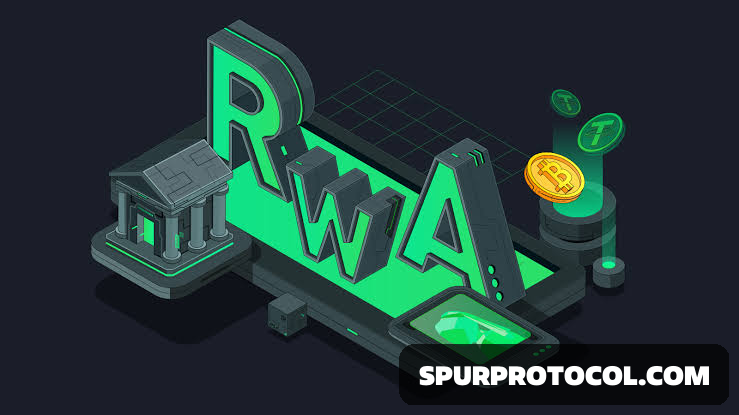The Rise of Real-World Asset (RWA) Tokenization
Bridging Traditional Finance and Blockchain
In the ever-evolving landscape of blockchain technology, one of the most transformative trends gaining momentum is the tokenization of real-world assets (RWAs). While cryptocurrencies like Bitcoin and Ethereum laid the groundwork for decentralized value exchange, RWA tokenization aims to do something even more revolutionary: bring tangible, real-world value—such as real estate, government bonds, commodities, and private equity—on-chain.
This movement marks a significant convergence between traditional finance (TradFi) and decentralized finance (DeFi), unlocking new opportunities for liquidity, efficiency, and transparency across global markets.
What Is RWA Tokenization?
RWA tokenization refers to the process of converting ownership rights of physical or financial assets into blockchain-based digital tokens. These tokens are secured by smart contracts and are often issued on public blockchains like Ethereum or institutional-grade platforms such as Avalanche, Polygon, or private chains developed specifically for financial markets.
For example:
A $100 million commercial real estate portfolio can be tokenized into 100 million digital tokens, each representing a fractional share.
A U.S. Treasury bond can be represented as an ERC-20 token, allowing 24/7 trading without traditional intermediaries.
Why It Matters: Key Benefits
Tokenizing real-world assets offers several tangible benefits:
1. Increased Liquidity
Traditionally illiquid markets—such as real estate or art—can become accessible through fractional ownership. Investors can buy and sell small portions without waiting months to close a deal.
2. Global Accessibility
Tokenized assets can be traded across borders in real time, opening up markets that were previously limited to local investors or high-net-worth individuals.
3. Operational Efficiency
Smart contracts automate processes like dividend distribution, interest payments, and ownership transfer, reducing paperwork and human error.
4. 24/7 Market Access
Unlike traditional exchanges, blockchain-based platforms operate around the clock, enhancing flexibility for global investors.
5. Transparency and Auditability
Every transaction is recorded on a transparent ledger, enabling real-time audits and greater investor trust.
Examples and Early Movers
Several major institutions and startups have already begun deploying RWA tokenization:
BlackRock and Franklin Templeton have tokenized portions of U.S. Treasury funds and fixed-income portfolios using blockchain infrastructure.
Ondo Finance, Centrifuge, and Maple Finance are DeFi-native platforms offering tokenized bonds and credit instruments to users on Ethereum and other blockchains.
RealT allows investors to purchase fractional shares of rental properties in the U.S., with income distributed through stablecoins.
These projects are not experimental anymore—they're managing billions of dollars in tokenized assets and attracting attention from both regulators and institutional investors.
Regulatory Considerations
The biggest challenge facing RWA tokenization is regulation. Questions around compliance, investor protection, cross-border jurisdiction, and taxation are still evolving. Regulators like the U.S. SEC and Europe's ESMA are watching closely to ensure tokenized securities adhere to existing laws.
However, governments are also exploring how tokenization can serve them. For instance,
Singapore’s Project Guardian explores tokenized bonds and FX trades using DeFi protocols.
Hong Kong and the UAE are crafting regulatory sandboxes to foster innovation while mitigating risk.
RWA Tokenization and DeFi: A Natural Marriage
DeFi platforms can provide liquidity, borrowing, and lending options for tokenized RWAs. For example, a tokenized bond could be used as collateral for a loan on a DeFi platform—blending the stability of traditional assets with the flexibility of DeFi.
This could help DeFi platforms mature by anchoring them to real-world value, reducing reliance on volatile crypto assets and increasing appeal to conservative investors.
Challenges and Risks
Despite its promise, RWA tokenization still faces several hurdles:
Legal and compliance risks surrounding ownership rights
Custody issues—how physical assets are held and insured
Interoperability between blockchains and traditional systems
Technology scalability and security
Without clear legal frameworks and robust custody solutions, mainstream adoption may remain cautious.
The Future Outlook
Tokenization of RWAs isn’t a theoretical concept—it’s already happening. Analysts from Citi and Boston Consulting Group estimate that $4–16 trillion worth of assets could be tokenized by 2030.
What we are witnessing is not just a new technology trend, but a foundational shift in the infrastructure of global finance. Tokenization can democratize investment access, reduce inefficiencies, and create new economic models. Whether it’s a $10 share in a Miami apartment or a digital slice of a global bond fund, the era of tokenized assets is here—and it’s only just beginning.

